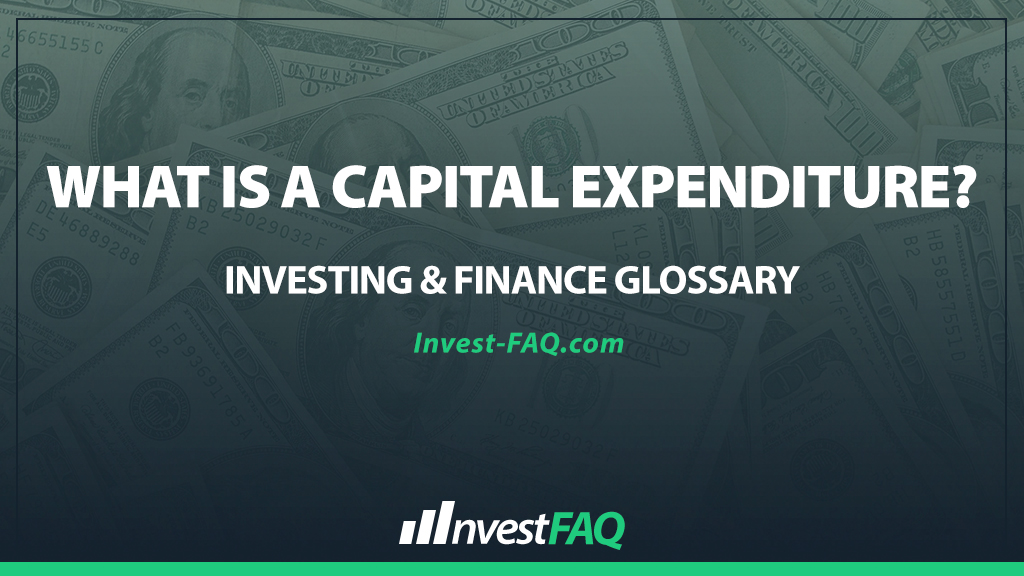
Capital Expenditure
Contents
A capital expenditure (CapEx) refers to funds used by a business to acquire, upgrade, and maintain physical assets such as property, industrial buildings, or equipment. This type of spending is invested in assets that will improve a company’s capacity or efficiency and is expected to be beneficial over the long term.
Capital expenditures are crucial for businesses aiming to grow or maintain their competitive advantage.
These investments typically have a multi-year lifespan and can include costs related to acquiring new land, constructing or renovating buildings, purchasing machinery, or upgrading technology.
CapEx decisions are strategic, often requiring significant analysis and planning due to their substantial impact on a company’s financial standing and operational capabilities.
Example of a Capital Expenditure
Imagine “Quality Furniture Co.,” which decides to expand its manufacturing capabilities by purchasing a new factory for $2 million and machinery for $800,000. The company pays $200,000 for the factory renovation and an additional $100,000 for installation and setup costs of the machinery.
Asset Acquisition and Improvement Costs: The total capital expenditure for Quality Furniture Co. amounts to $3.1 million, covering the purchase of the factory, machinery, renovation, and installation costs.
Capitalization of Costs: These costs are capitalized, meaning they are added to the company’s balance sheet as assets rather than expensed on the income statement. This reflects their expected utility over several years.
Depreciation: The company then begins depreciating these assets over their useful lives, systematically allocating the cost of the assets over the periods they are expected to benefit the business.
In this scenario, Quality Furniture Co.’s capital expenditures not only expand its operational capacity but also have significant accounting implications. By capitalizing these expenses, the company spreads the impact of these large investments over the assets’ useful lives, matching the cost with the revenue those assets help generate. This approach provides a more accurate reflection of the company’s profitability and asset value over time.
Significance for Investing & Finance
Capital expenditures play a pivotal role in accounting and financial management:
Asset Management: They contribute to the growth and maintenance of the company’s asset base, directly impacting its future revenue-generating capacity.
Financial Statement Impact: CapEx affects the balance sheet by increasing fixed assets and impacts the cash flow statement under investing activities, while its amortization affects the income statement over time.
Long-term Financial Health: Proper management and accounting of CapEx are critical for a company’s long-term sustainability, enabling strategic investments in its growth and operational efficiency.
Budgeting and Forecasting: Capital expenditure requires careful budgeting and forecasting due to its significant financial commitment and impact on a company’s cash reserves and borrowing needs.
In summary, capital expenditure is a fundamental aspect of strategic financial management, enabling businesses to invest in their long-term growth and operational efficiency.
Accurate accounting and careful planning of CapEx are essential for maintaining financial health and supporting a company’s strategic objectives.
FAQ
How does capital expenditure differ from operating expenditure in a company’s budget?
Capital expenditure (CapEx) refers to funds used by a company to purchase or improve long-term assets, such as equipment or property, which are capitalized and depreciated over their useful lives, whereas operating expenditure (OpEx) covers day-to-day expenses necessary for the company’s immediate operations, which are fully expensed in the period they are incurred.
What impact does capital expenditure have on a company’s cash flow statement?
Capital expenditure appears under the investing activities section of a company’s cash flow statement, reflecting a cash outflow that decreases the company’s cash balance in the short term but is intended to generate long-term benefits and value.
Can a high level of capital expenditure affect a company’s dividend policy?
Yes, a high level of capital expenditure can impact a company’s dividend policy by reducing the amount of free cash flow available for dividend distributions, as significant funds are allocated toward long-term assets for growth and operational efficiency.
How do companies decide on the amount to allocate to capital expenditure?
Companies decide on the amount to allocate to capital expenditure based on strategic growth objectives, expected returns on investment, the necessity of asset replacements or upgrades, and the availability of financial resources, balancing long-term benefits with current financial capacity.
